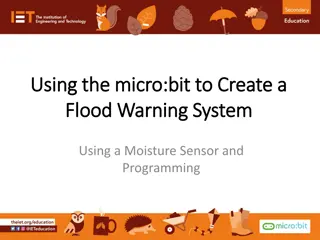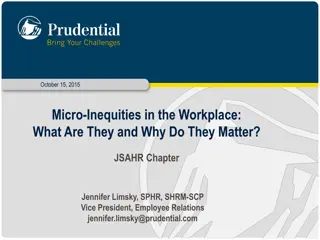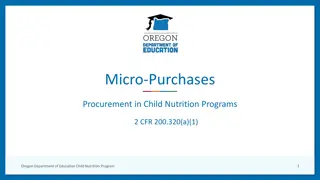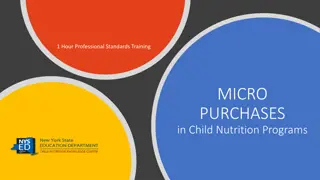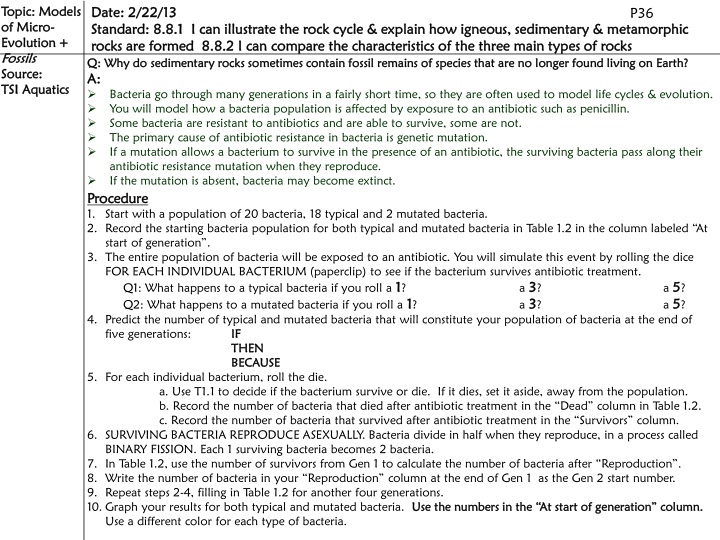
Antibiotic Resistance in Bacteria Population Evolution
Learn how genetic mutation and antibiotic exposure can impact bacteria populations, leading to antibiotic resistance. Follow a simulation model to explore the survival dynamics of typical and mutated bacteria over multiple generations.
Download Presentation

Please find below an Image/Link to download the presentation.
The content on the website is provided AS IS for your information and personal use only. It may not be sold, licensed, or shared on other websites without obtaining consent from the author. If you encounter any issues during the download, it is possible that the publisher has removed the file from their server.
You are allowed to download the files provided on this website for personal or commercial use, subject to the condition that they are used lawfully. All files are the property of their respective owners.
The content on the website is provided AS IS for your information and personal use only. It may not be sold, licensed, or shared on other websites without obtaining consent from the author.
E N D
Presentation Transcript
Topic: Models Topic: Models of Micro of Micro- - Evolution + Evolution + Fossils Fossils Source: Source: TSI Aquatics TSI Aquatics Date: 2/22/13 Date: 2/22/13 Standard: 8.8.1 I can illustrate the rock cycle & explain how igneous, sedimentary & metamorphic Standard: 8.8.1 I can illustrate the rock cycle & explain how igneous, sedimentary & metamorphic rocks are formed 8.8.2 I can compare the characteristics of the three main types of rocks rocks are formed 8.8.2 I can compare the characteristics of the three main types of rocks Q: Why do sedimentary rocks sometimes contain fossil remains of species that are no longer found living on Earth? Q: Why do sedimentary rocks sometimes contain fossil remains of species that are no longer found living on Earth? A: A: Bacteria go through many generations in a fairly short time, so they are often used to model life cycles & evolution. You will model how a bacteria population is affected by exposure to an antibiotic such as penicillin. Some bacteria are resistant to antibiotics and are able to survive, some are not. The primary cause of antibiotic resistance in bacteria is genetic mutation. If a mutation allows a bacterium to survive in the presence of an antibiotic, the surviving bacteria pass along their antibiotic resistance mutation when they reproduce. If the mutation is absent, bacteria may become extinct. Procedure Procedure 1. Start with a population of 20 bacteria, 18 typical and 2 mutated bacteria. 2. Record the starting bacteria population for both typical and mutated bacteria in Table 1.2 in the column labeled At start of generation . 3. The entire population of bacteria will be exposed to an antibiotic. You will simulate this event by rolling the dice FOR EACH INDIVIDUAL BACTERIUM (paperclip) to see if the bacterium survives antibiotic treatment. Q1: What happens to a typical bacteria if you roll a 1 1? Q2: What happens to a mutated bacteria if you roll a 1 1? 4. Predict the number of typical and mutated bacteria that will constitute your population of bacteria at the end of five generations: IF IF THEN THEN BECAUSE BECAUSE 5. For each individual bacterium, roll the die. a. Use T1.1 to decide if the bacterium survive or die. If it dies, set it aside, away from the population. b. Record the number of bacteria that died after antibiotic treatment in the Dead column in Table 1.2. c. Record the number of bacteria that survived after antibiotic treatment in the Survivors column. 6. SURVIVING BACTERIA REPRODUCE ASEXUALLY. Bacteria divide in half when they reproduce, in a process called BINARY FISSION. Each 1 surviving bacteria becomes 2 bacteria. 7. In Table 1.2, use the number of survivors from Gen 1 to calculate the number of bacteria after Reproduction . 8. Write the number of bacteria in your Reproduction column at the end of Gen 1 as the Gen 2 start number. 9. Repeat steps 2-4, filling in Table 1.2 for another four generations. 10. Graph your results for both typical and mutated bacteria. Use the numbers in the At start of generation column. Use a different color for each type of bacteria. P36 a 3 3? a 3 3? a 5 5? a 5 5? Use the numbers in the At start of generation column.
Topic: Models Topic: Models of Micro of Micro- - Evolution + Evolution + Fossils Fossils Source: Source: TSI Aquatics TSI Aquatics Date: 2/21/13 Date: 2/21/13 Standard: 8.8.1 I can illustrate the rock cycle & explain how igneous, sedimentary & metamorphic Standard: 8.8.1 I can illustrate the rock cycle & explain how igneous, sedimentary & metamorphic rocks are formed 8.8.2 I can compare the characteristics of the three main types of rocks rocks are formed 8.8.2 I can compare the characteristics of the three main types of rocks Table 1.1. Dice roll determining bacteria survival Table 1.1. Dice roll determining bacteria survival P36 Bacteria Dice Roll Bacteria Dice Roll 1 1 2 2 3 3 4 4 5 5 6 6 Typical (Coated Paperclip) Typical (Coated Paperclip) Survive Die Die Die Die Die Mutated (Silver Paperclip) Mutated (Silver Paperclip) Survive Survive Survive Survive Survive Die TABLE 1.2 BACTERIA SURVIVAL OVER GENERATIONS TABLE 1.2 BACTERIA SURVIVAL OVER GENERATIONS Gener Gener ation BACTERIA BACTERIA NUMBER OF BACTERIA NUMBER OF BACTERIA ation At start of generation At start of generation Dead Dead- - (end of generation) (end of generation) Survivors Survivors- - (end of (end of generation) generation) Reproduction Reproduction- - (survivors x2) (survivors x2) 1 1 Typical(coated) Typical(coated) Mutated (silver) Mutated (silver) 2 2 Typical(coated) Typical(coated) Mutated (silver) Mutated (silver) 3 3 Typical(coated) Typical(coated) Mutated (silver) Mutated (silver) 4 4 Typical(coated) Typical(coated) Mutated (silver) Mutated (silver) 5 5 Typical(coated) Typical(coated) Mutated (silver) Mutated (silver) 6 6 Typical(coated) Typical(coated) Mutated (silver) Mutated (silver)
Topic: Models Topic: Models of Micro of Micro- - Evolution + Evolution + Fossils Fossils Source: Source: TSI Aquatics TSI Aquatics Date: 2/21/13 Date: 2/21/13 Standard: 8.8.1 I can illustrate the rock cycle & explain how igneous, sedimentary & metamorphic Standard: 8.8.1 I can illustrate the rock cycle & explain how igneous, sedimentary & metamorphic rocks are formed 8.8.2 I can compare the characteristics of the three main types of rocks rocks are formed 8.8.2 I can compare the characteristics of the three main types of rocks Fig 1: P36 Key Key
Topic: Models Topic: Models of Micro of Micro- - Evolution + Evolution + Fossils Fossils Source: Source: TSI Aquatics TSI Aquatics Date: 2/21/13 Date: 2/21/13 Standard: 8.8.1 I can illustrate the rock cycle & explain how igneous, sedimentary & metamorphic Standard: 8.8.1 I can illustrate the rock cycle & explain how igneous, sedimentary & metamorphic rocks are formed 8.8.2 I can compare the characteristics of the three main types of rocks rocks are formed 8.8.2 I can compare the characteristics of the three main types of rocks Activity Questions ( Activity Questions (answer in complete sentences with evidence and explanations!): ): 1. Compare your final typical and mutant bacteria numbers with your class. Why are your findings similar or different? P36 2.Did your prediction match your observations? Why or why not? 3.On average, how do the proportions of typical and mutated bacteria change in the population over time? 4.What would have happened if you only had one mutated bacterium and it died during the first generation? 5.What do you think might happen to a population of bacteria that is exposed frequently to antibiotics, such as if a person was prescribed antibiotics multiple times a year? 6.What was necessary to simulate microevolution? (Hint: Think about how the game would work if all the paperclip bacteria looked the same.) 7.Explain why genetic evolution happens to a whole population rather than to a single individual. 8. How does genetic evolution in bacteria help us understand the fossils found in sedimentary rocks better?







